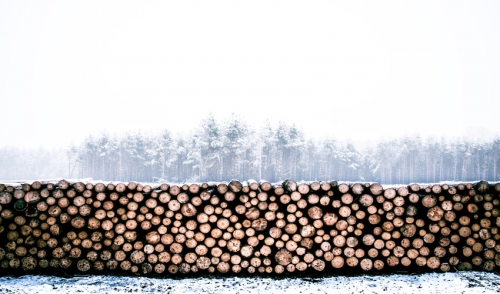
Firewood Storage in Winter
Nothing is cozier on a cold winter evening than a crackling fire, warm and glowing, in the fireplace or stove. Wood heat is also less expensive than many gas or electric furnaces, and can be more practical for home heating and cooking in many areas. But how should you store your firewood to be sure it is ready for winter use just when you need it most?
Bad Storage Leads to Bad Results
No matter how much firewood you have on hand, it will be useless if it is stored incorrectly. Badly stored wood will remain damp and wet, which will lead to smoking and smoldering rather than burning for the best heat. This lowers the efficiency of your wood stove, requiring more fuel to do the same work. Poorly stored wood can also be home to a host of rodents, snakes and insects, including termites, which can cause severe damage to your home if they are introduced when you bring wood in to burn. General decay and rot of improperly stored wood can also lead to unpleasant smells, mold and decomposition that will make the wood worthless for burning.
In short, if your firewood is stored badly, it goes to waste. Not only can the wood not be used, but the time, effort and money you spent to gather, prepare and store the wood in the first place has also gone to waste and you may run short of wood before winter is over.
Properly Storing Firewood for Winter
Fortunately, it is easy to store firewood properly so it is well seasoned and ready to use every winter. Whether you are beginning to build a woodpile in early spring or don't start until late fall, the principles of properly storing wood are the same.
- Split Wood Efficiently
Before storing and stacking wood, it must be split appropriately. Keep in mind the size and proportions of your fireplace, stove or furnace, and split wood to the right lengths and widths for easy use. Triangular wedges are easiest to stack and will have more surface area so the wood can dry more quickly so it can be used sooner.
- Dry Wood Thoroughly
The drier wood is, the longer it will last when stacked and the better it will burn. Store wood in an open area with proper ventilation on all sides. If possible, store freshly cut wood in a windy, sunny location where it will dry more quickly, but protect it from rain or snow that will keep it wet and unusable. For the best seasoning, wood can need up to 1-2 years to thoroughly dry.
- Stack Location Matters
Don't stack your winter firewood just anywhere. Your stack should be close to the house and easy to access, even in poor weather. This will make it easier to bring in more wood when you need it, without risking slips, falls or other problems as you go back and forth.
- Get Elevated
The best woodpiles do not sit on the ground. When firewood sits directly on the ground, it can absorb moisture and invites insects to take up residence. Instead, use skids, grates or racks to keep your wood at least 2-3 inches above the ground. This will also improve air circulation to keep the wood dry, especially when the ground is wet from melting snow and ice.
- Stack Stability
As you begin to stack your firewood, place larger pieces on the bottom so they will support the rest of the stack. Take care that the stack does not lean as it gets taller, or it could topple dangerously as wood is removed. Avoid stacking wood too high where it will be difficult to reach. Don't try to pack wood tightly – a little bit of space will promote better air circulation for drier, more well-seasoned wood.
- Keep It Clean
Never treat firewood with chemicals, solvents or insecticides. These treatments can have dangerous results, such as higher combustibility that can lead to uncontrolled fires. Some chemicals also release toxic fumes when burned. If the area around the woodpile must be treated, cover the wood temporarily while the chemicals are applied to prevent any from getting on the firewood. As you prepare your winter firewood, it is also a good time to be sure chimneys, flues and vents are all clean and working properly as well.
- To Cover or Not to Cover
Ideally, firewood should remain uncovered so it can be properly dried, but this is not practical when rain, snow and ice can quickly coat winter firewood. A good cover over the top of your woodpile will protect it, and be sure the cover is slanted to shed moisture away from the pile's base. The cover should be broad enough to provide a good overhang, but the sides of the pile should remain open so air can thoroughly circulate.
With care, it is easy to store firewood properly for warm, cozy use all winter.

